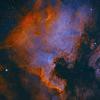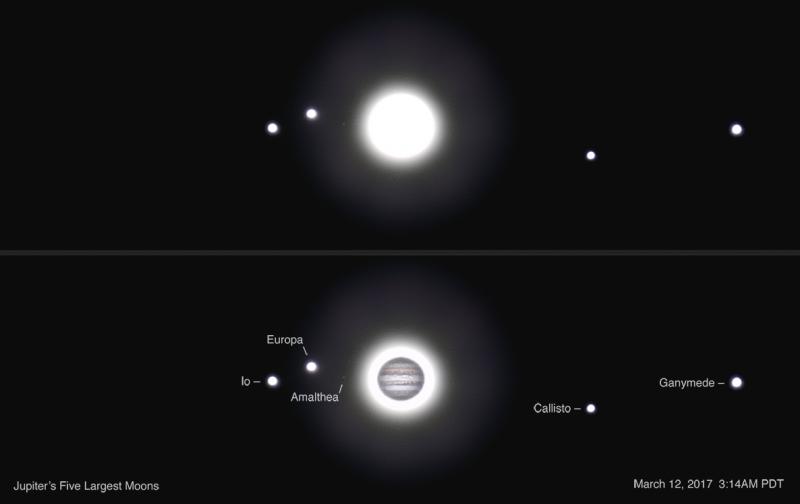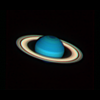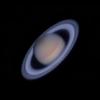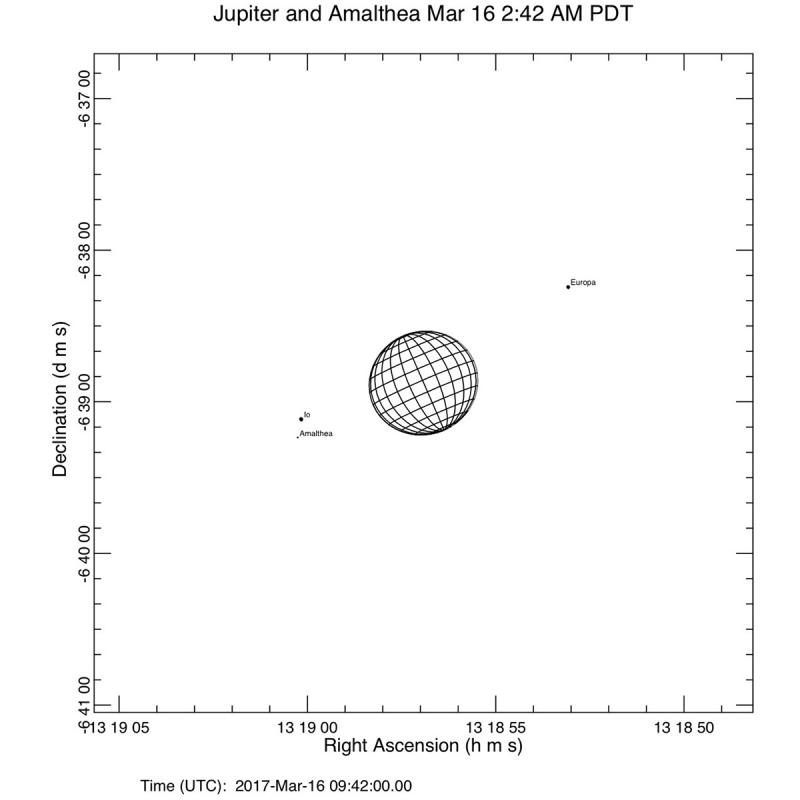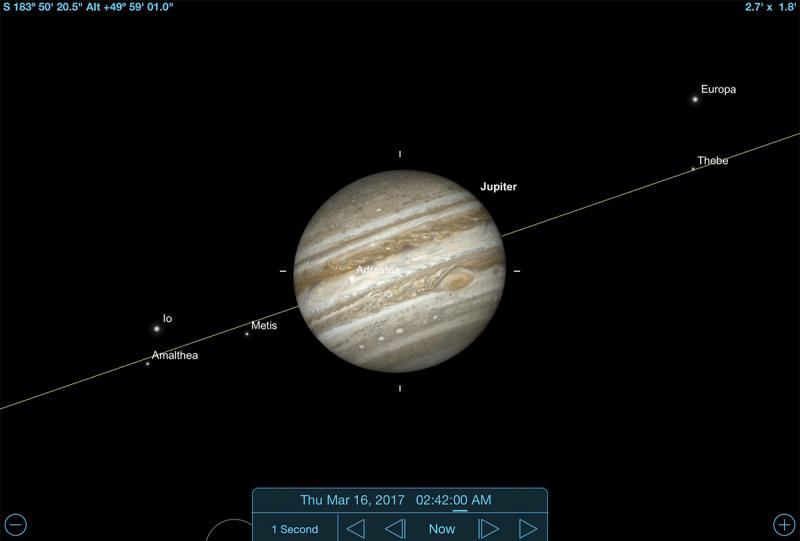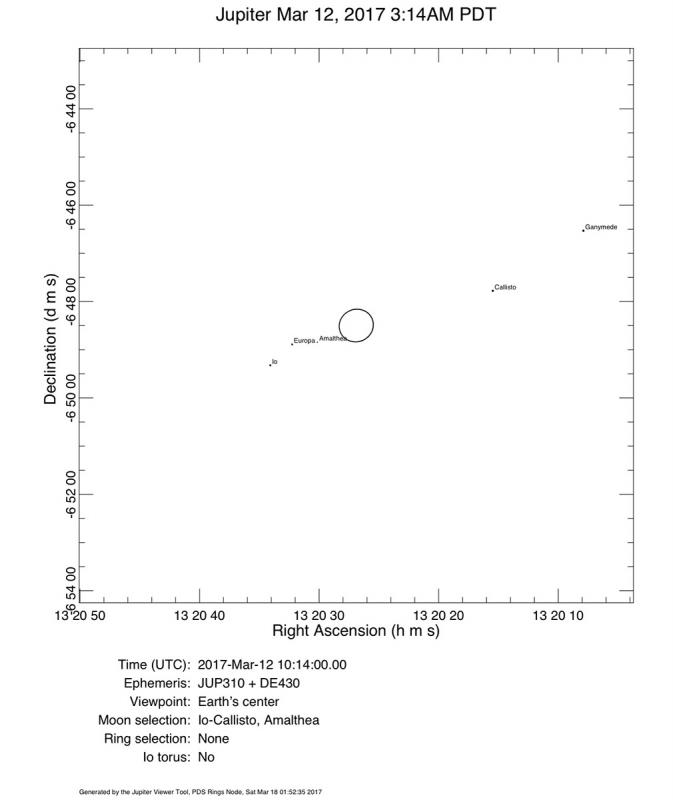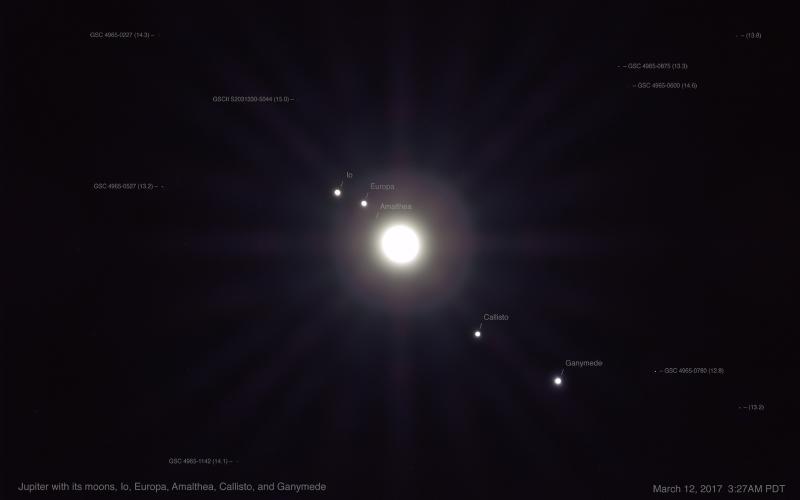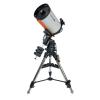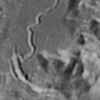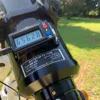About one year ago I captured some images showing seven of Jupiter's moons but I was never completely happy with my image of Amalthea. Amalthea is the fifth largest moon of Jupiter but it is MUCH smaller than the four Galilean moons. It's a non-spherical object with a mean diameter of just 167 km (ellipsoid, 250 × 146 × 128 km according to Wikipedia). By some reports it is also the reddest known object in the solar system. Right now its magnitude is 14.8 and it is well positioned for observers in the western U.S. since it reaches greatest elongation from Jupiter each night just as it gets close to the local meridian (its orbital period is almost exactly 0.5 days, so it's pretty much in the same place within its orbit every night, at least for the next few weeks).
In any case, I think I've got something that is somewhat better than what I had last year. I used a Tele Vue NP127is with a 1.8X A-P barlow and a QHY5III-178C camera. I combined (stacked) 24 subs that were each exposed for 16 seconds and use PixInsight's FFTRegistration script to do the registration and integration. Below is the result, with the top image the integration and the bottom version with labels and an image of Jupiter that I took on the same morning (not at exactly the same time, but with the same equipment and at the same scale). As you can see the image of Jupiter (and the other moons) was highly overexposed in order to catch Amalthea.
If I get any more clear nights in the next week I may try again, since I think I can do somewhat better. Last night was the full moon and it was fairly close to Jupiter and the skies were somewhat hazy, in fact just after I finished the images I had a pretty thick fog bank move in. Also, the next several days may not be any better, because the moon will be very close to Jupiter.
I have other sequences to process (different exposures), so maybe I will find something that is better. In fact, I should blink the subs that I have to eliminate the worst of the lot (seeing and tracking errors).
Edited by james7ca, 12 March 2017 - 11:48 PM.


